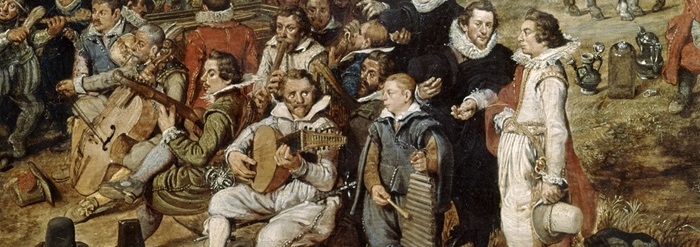
Peterborough Psalter, England, 1300-50.
The most fundamental question of all in playing early music today is: how can the music be played to reflect historical practice? This is the second of three articles looking at historically-informed ways of performing medieval music, aiming to be a practical guide, with plenty of musical examples and illustrations, and a bibliography for those who wish to delve further.
The first article focussed on historical instrument combinations, using the illustrations of two 13th century manuscripts as representative examples. This second article distinguishes the difference between modern harmony and medieval polyphony, and the main body of the article looks at styles of medieval accompaniment by referencing historical models. For simplicity and clarity, the same passage of music is used as the basis for exploring a variety of accompaniments. Arrangements of the first section of Cantiga de Santa Maria 10 illustrate heterophony, parallel movement, fifthing, the gymel, the importance of medieval modes, drones and drone-like accompaniments, the type of organum derided by a cleric as “minstrelish little notes”, the rota and ground bass, and the motet.
For each method, there is a sound clip of a short musical performance, composed in historically informed style by Ian Pittaway, performed by Kathryn Wheeler on recorder and vielle, and by Ian Pittaway on harp, gittern and oud. There are links to 15 illustrative videos, putting the techniques in this article into practice. Finally, the question of what to do if there isn’t a tune is addressed.
The key message of this article is: once informed, be creative.


